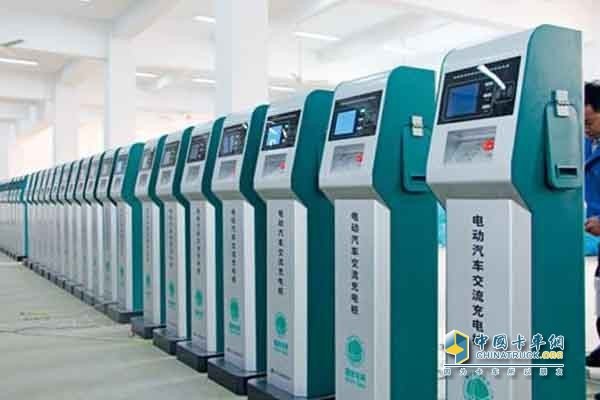2020 private passenger car basic "one car and one" When it comes to new energy vehicles, the most intuitive experience is that there are not many electric buses and private electric vehicles that shuttle between the streets. According to relevant department surveys, from 2013 to 2015, Shishi City promoted 3,888 new energy vehicles, among which 3,433 were pure electric vehicles and 545 were hybrid vehicles. As of June 2016, Shishi has built 44 charging stations, 1013 charging piles (including station piles), 49 charging stations under construction, and 1022 charging piles (including station piles). The city’s electric vehicle charging infrastructure has made some achievements, but there are indeed some difficulties and problems. According to the survey, the development of charging infrastructure and electric vehicles is inconsistent with the phenomenon that there are no cars and piles and no cars. Hebei and Shishi have successively issued a series of policies to promote the promotion of electric vehicles and the construction of charging infrastructure, which has promoted the promotion and application of new energy vehicles and charging infrastructure. It is estimated that by the end of the “Thirteenth Five-Year Planâ€, there will be approximately 23,000 electric vehicles in Shijiazhuang City, of which: 3,600 buses; 7,400 special-purpose vehicles; and 12,000 private-use vehicles. To meet the above-mentioned development goals of new energy vehicles, Shijiazhuang City has to build 24,150 electric vehicle charging piles and 318 charging stations. Where are these charging piles and charging stations built? How to build? The “planning†(outline) is made clear. By 2020, the main city will plan to form a multi-distribution, high-density charging service network with a ratio of public charging piles to electric vehicles of not less than 1:7 and a public charging service radius of not more than 0.9 kilometers. The central urban areas (Mining District, Luquan District, Fucheng District, Fucheng District, Gaoxin District, Zhengding New District, recycling chemical parks, and comprehensive bonded areas, and Zhengding County) will form an appropriately centralized charging service network. The surrounding counties and cities form a well-defined and appropriately reserved charging service network. Specific to the key project objectives: By 2020, the private passenger car sector: basically realize “one vehicle and one pileâ€; urban public sector: promote a large-scale and balanced charging service network for charging infrastructure. The urban public domain charging infrastructure is the first to be built in the downtown area, downtown area, and traffic volume. Priority will be given to the construction of public charging infrastructure in parking lots equipped in large commercial areas, cultural and sports venues, social parking lots, large office buildings, universities, hospitals, tourist attractions, and automobile 4S shops. At the same time, it will further promote the construction of charging infrastructure for newly constructed and built communities, and classify and solve the problem of charging difficulty. For communities with fixed parking spaces and power conditions, adhere to the "one vehicle and one pile" and promote the construction of self-use charging infrastructure. For those communities without fixed parking spaces and power supply conditions, enterprises such as charging services, property services, and developers are encouraged to participate in the construction, operation and management of charging facilities. In addition, it will also focus on the integration of Beijing-Tianjin-Hebei transport services, and the infrastructure of electric vehicle charging will be carried out in the key cities of Beijing-Tianjin-Hebei and Shijiazhuang, as well as the backbone highways and important transportation nodes between the urban areas and counties. Or will reduce 930,000 tons of carbon dioxide emissions It is understood that according to the calculation of the average investment cost of charging infrastructure in Shijiazhuang City (excluding the auxiliary charges for external power grids), according to the “planning†(outline) charging infrastructure construction target, the cumulative investment by 2020 is about 780 million yuan. Judging from the economic benefits, according to the sales target of electric vehicles, the cumulative chargeable electricity that can be realized in 2016-2020 is about 937 million kWh, saving more than 301,300 tons of alternative fuel, and reducing carbon dioxide emissions by more than 932,800 tons. Judging from the social benefits, pure electric vehicles do not produce harmful gases during the driving process and can basically achieve zero emission of various pollutants. Through the construction of supporting facilities such as electric vehicle charging stations, it can provide a powerful guarantee for the development of the electric vehicle industry. , Provide a large number of job opportunities; the use of electric grids to recharge electric vehicles, increase the application of electricity in the transportation energy field, reduce the dependence on petroleum resources, optimize the energy consumption structure; electric vehicle charging stations are generally built in large parking lots and public Service places and other places can be integrated with charging stations and business offices to improve land utilization. In addition, the construction of electric vehicle charging stations can also improve the efficiency of the use of the power grid and increase resource utilization.
Drying Machines,are the key drying machines in a washing recycling plant.
We have Vertical type and Horizontal type supply for varies kinds of plastic application like PP PE flakes/film, PET flakes drying. The strong long shaft with many paddles on it and surrounded are the mesh screeen.The rotating speed will meet 1200rpm above which will remove the high water contents in recycled materials after washing.
Drying Machines Drying Machines,Pipe Drying Machine,Plastic Drying Machine,Pipe Drying Equipment Suzhou Beakeland Machinery Co., Ltd. , http://www.beakelandpm.com Charging pile
Charging pile
Shijiazhuang will build 24150 charging posts
According to the "Shijiazhuang Electric Vehicle Charging Infrastructure Development Plan (2016-2020) (2016-2020)" just released by the Shijiazhuang Municipal Development and Reform Commission, by 2020, Shijiazhuang is expected to accumulatively invest 780 million yuan in planning and constructing charging infrastructure, securing about 23,000 electric vehicles. The charging needs of the car, at the same time, Shijiazhuang will also promote the interconnection of Beijing-Tianjin-Hebei charging infrastructure.